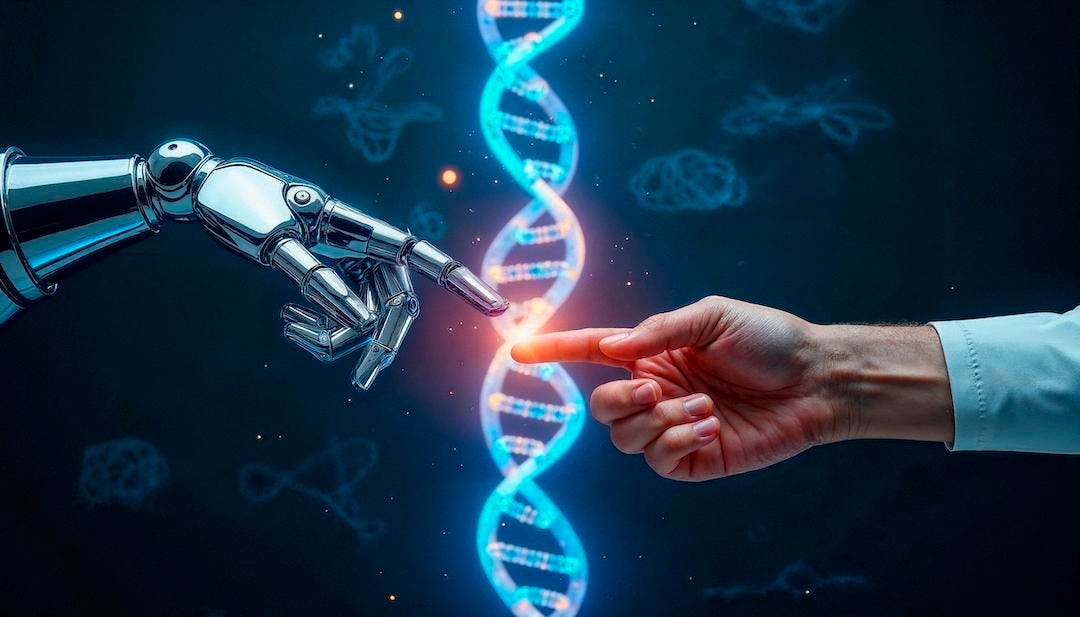Thousands of previously “invisible” microproteins—tiny chains of fewer than 100 amino acids—can profoundly change human biology when mutated.
Image by freepik
A fundamental discovery is overturning decades of molecular biology. Thousands of previously “invisible” microproteins—tiny chains of fewer than 100 amino acids—can profoundly change human biology when mutated. These small proteins, once dismissed as genetic noise, are now recognized as determinants of phenotype. They are capable of triggering dramatic shifts in cell function, disease susceptibility and even the development of entirely new traits. Recent research reveals that alterations in microprotein sequences can result in distinct clinical outcomes.
This redefines what we consider a “gene” and our understanding of genotype-to-phenotype relationships. It also forces a reassessment of the true complexity of the human genome. ShortStop, an advanced machine learning framework, stands out in this newly visible layer of biology. It is rapidly expanding our catalog of functional proteins. Crucially, the framework enables us to expand our catalog of functional proteins and connect specific microprotein mutations with disease states and therapeutic potential.
In effect, the discovery and categorization of microproteins is opening new frontiers in medicine. The power to pinpoint disease-associated microproteins and understand how tiny sequence changes yield new phenotypes holds promise for the next generation of diagnostics and targeted therapeutics. With ShortStop illuminating these hidden elements, the landscape of genes, proteins and human disease is dramatically broader and far more dynamic than ever imagined. This breakthrough also arrives in the time of an evolving central dogma of molecular biology.
The Limits of the Old Dogma—And What Lies Beyond
For decades, biologists understood the flow of genetic information through a simple framework: DNA produces RNA, which in turn makes proteins, leading to observable traits and disease. This unidirectional model placed proteins as the sole functional end-products of gene expression. Today, that narrative has evolved.
The new dogma recognizes a more complex, integrated system: DNA and RNA can influence each other, RNA exerts sophisticated control over how, when, and what kinds of proteins are made and these processes together shape phenotype. Rather than a single line of information flow, molecular biology now acknowledges DNA and RNA as interactive elements. RNA acts as a pivotal regulator of protein production and ultimately, biological outcomes.
To help appreciate what this truly tells us, an analogy can be helpful. Building a living system is like constructing a Lego set: proteins are the building blocks, and regulatory RNAs are the instructions guiding assembly. Changing the instructions changes the result. Different organisms may use similar blocks but create distinct outcomes by varying the instructions. This analogy underscores a central insight. Small changes, particularly within microproteins, can have outsized effects on phenotype. It also illuminates why, historically, scientists overlooked these tiny elements.
Microproteins and Why Mutations Matter
What was once considered genomic dark matter could be rich with novel genetic elements. Historically, sequences under 150 amino acids were ignored, seen as noise rather than biology. The logic was simple: only large, complex proteins were “real”; smaller segments were mistakes or minor regulators. Recent findings now reveal that microproteins form a vibrant landscape of active translation.
While classic genetic research has shown how a single point mutation in a large protein can radically alter phenotype, recent studies are revealing that microproteins are no exception to this rule. Mutations within these small chains can result in dramatic changes to cell function. They can also impact developmental processes and even drive distinct clinical phenotypes. For example, recent reports tie microprotein mutations to altered cell signaling, disrupted metabolism, and impaired stress responses. Emerging evidence suggests that these tiny peptides may also act as switches. They may even amplify or silence gene pathways that affect human health, development, and disease.
Yet, as the biological significance of microproteins comes into focus, a major challenge remains. Amongst thousands of potential candidates, which ones are truly functional and which are mere byproducts of translation?
ShortStop: AI at the Forefront of Discovery
Traditional methods are slow and labor-intensive, unable to separate signal from noise efficiently. Addressing this bottleneck is ShortStop. It is a novel machine learning framework designed to distinguish functional microproteins from regulatory noise.
Instead of manually sorting every candidate, ShortStop efficiently distinguishes functional microproteins from regulatory noise, prioritizing the most promising sequences for experimental follow-up. Developed by researchers at the Salk Institute, ShortStop works by training on both known microproteins and computer-generated control sequences that lack evolutionary selection. This dual-class system enables ShortStop to categorize these small molecules into two groups: those resembling well-characterized microproteins, known as “SAMs,” and those more akin to random or non-functional peptides, referred to as “PRISMs.”
When applied to large published datasets, ShortStop classified about 8% as SAMs—candidates for genuine microprotein function. The rest fell into PRISMs, representing either translational noise or regulatory sequences. ShortStop operates on widely available RNA sequencing datasets. It enables scientists across diverse fields to interrogate microprotein landscapes efficiently—expanding opportunities for discovery in health and disease.
Real-World Case Studies: Cancer and Beyond
The framework’s power was recently demonstrated when researchers analyzed gene expression in lung tumors versus healthy tissue. ShortStop identified 210 novel microprotein candidates, several of which were validated by mass spectrometry. This included one that was strongly upregulated in cancer and had previously been missed by conventional pipelines. Some of these microproteins may serve as biomarkers or even therapeutic targets.
Additional recent studies extend these findings. Cancer-associated micropeptides, including those encoded by non-coding RNAs, are actively involved in tumor cell invasion, migration, and drug resistance. Therapeutic targeting of such microproteins is under exploration, with novel peptide-based inhibitors and homing technologies advancing the field of cancer treatment. Many long non-coding RNAs are now found to encode micropeptides that regulate cell signaling, DNA repair and immune responses. This is redefining approaches to personalized cancer therapy.
Rethinking the Genome
This marks a turning point in how we define genes and proteins. By revealing significant biology within previously overlooked short sequences, we are prompted to rethink our understanding of pathology, signaling, evolution, and therapeutic development. Our catalog of human genes, once believed nearly complete, may be only a small part of a much larger landscape.
As tools like ShortStop continue to illuminate hidden microproteins, the boundaries of protein function and genetic coding are being redrawn. The result: new diagnostics, drug targets, and insights into human biology—ushering in an era of unprecedented complexity and opportunity in genomic medicine.









